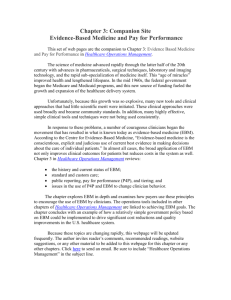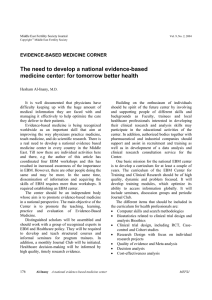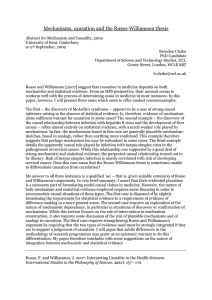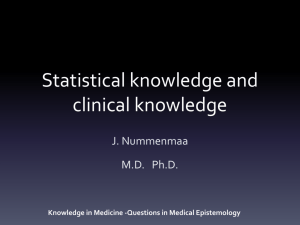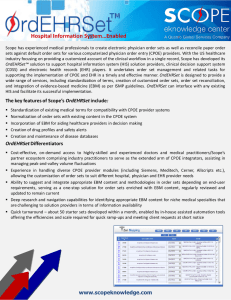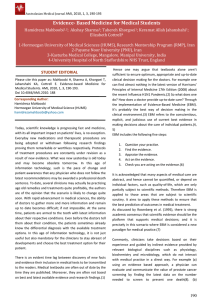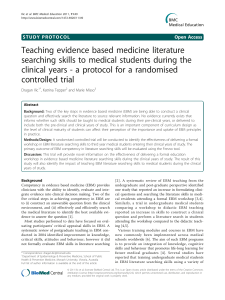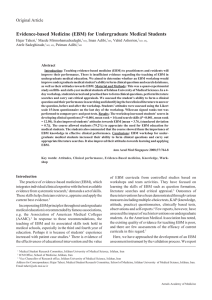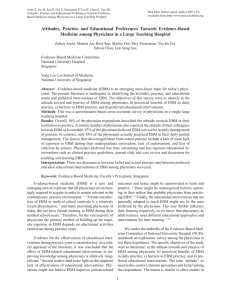Abstract submission for SPSP 2009 Dr Brendan Clarke PhD Candidate
advertisement
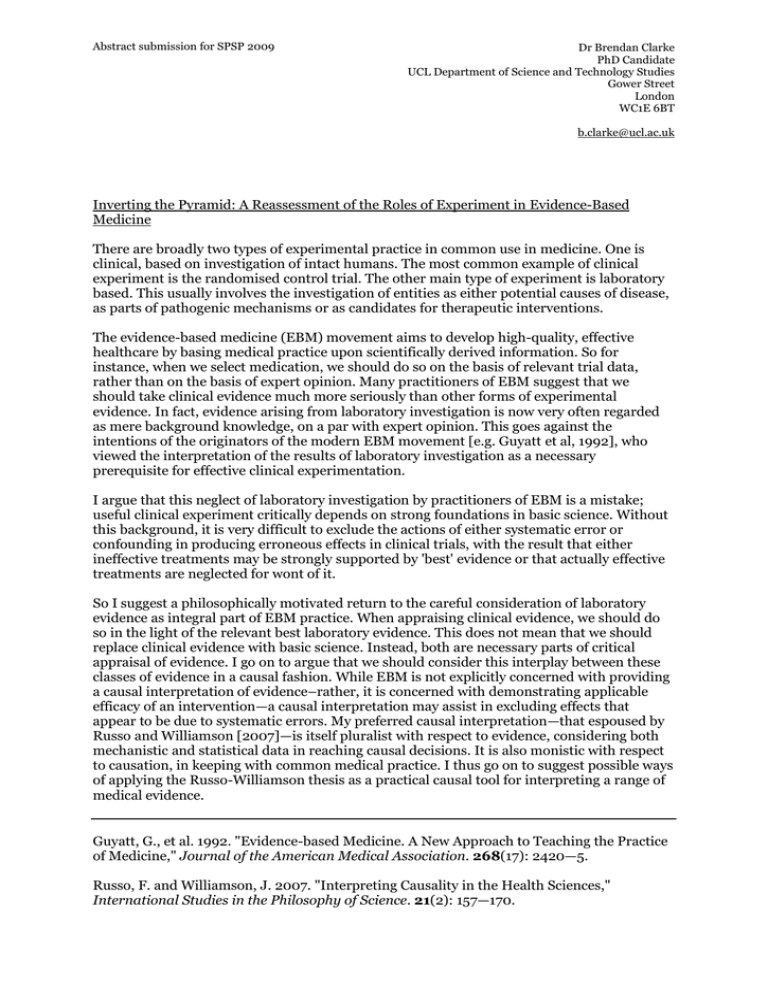
Abstract submission for SPSP 2009 Dr Brendan Clarke PhD Candidate UCL Department of Science and Technology Studies Gower Street London WC1E 6BT b.clarke@ucl.ac.uk Inverting the Pyramid: A Reassessment of the Roles of Experiment in Evidence-Based Medicine There are broadly two types of experimental practice in common use in medicine. One is clinical, based on investigation of intact humans. The most common example of clinical experiment is the randomised control trial. The other main type of experiment is laboratory based. This usually involves the investigation of entities as either potential causes of disease, as parts of pathogenic mechanisms or as candidates for therapeutic interventions. The evidence-based medicine (EBM) movement aims to develop high-quality, effective healthcare by basing medical practice upon scientifically derived information. So for instance, when we select medication, we should do so on the basis of relevant trial data, rather than on the basis of expert opinion. Many practitioners of EBM suggest that we should take clinical evidence much more seriously than other forms of experimental evidence. In fact, evidence arising from laboratory investigation is now very often regarded as mere background knowledge, on a par with expert opinion. This goes against the intentions of the originators of the modern EBM movement [e.g. Guyatt et al, 1992], who viewed the interpretation of the results of laboratory investigation as a necessary prerequisite for effective clinical experimentation. I argue that this neglect of laboratory investigation by practitioners of EBM is a mistake; useful clinical experiment critically depends on strong foundations in basic science. Without this background, it is very difficult to exclude the actions of either systematic error or confounding in producing erroneous effects in clinical trials, with the result that either ineffective treatments may be strongly supported by 'best' evidence or that actually effective treatments are neglected for wont of it. So I suggest a philosophically motivated return to the careful consideration of laboratory evidence as integral part of EBM practice. When appraising clinical evidence, we should do so in the light of the relevant best laboratory evidence. This does not mean that we should replace clinical evidence with basic science. Instead, both are necessary parts of critical appraisal of evidence. I go on to argue that we should consider this interplay between these classes of evidence in a causal fashion. While EBM is not explicitly concerned with providing a causal interpretation of evidence–rather, it is concerned with demonstrating applicable efficacy of an intervention—a causal interpretation may assist in excluding effects that appear to be due to systematic errors. My preferred causal interpretation—that espoused by Russo and Williamson [2007]—is itself pluralist with respect to evidence, considering both mechanistic and statistical data in reaching causal decisions. It is also monistic with respect to causation, in keeping with common medical practice. I thus go on to suggest possible ways of applying the Russo-Williamson thesis as a practical causal tool for interpreting a range of medical evidence. Guyatt, G., et al. 1992. "Evidence-based Medicine. A New Approach to Teaching the Practice of Medicine," Journal of the American Medical Association. 268(17): 2420—5. Russo, F. and Williamson, J. 2007. "Interpreting Causality in the Health Sciences," International Studies in the Philosophy of Science. 21(2): 157—170.
